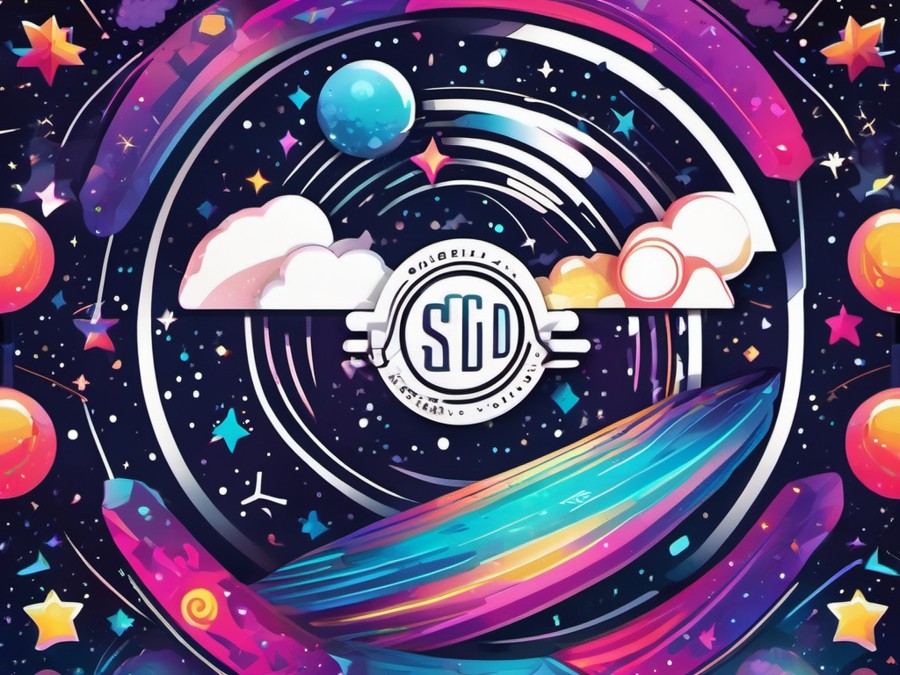· Charlotte Will · External Hard Drives · 8 min read
What is the Benefit of Using USB 3.0/USB 3.1 External Hard Drives?
Discover the benefits of using USB 3.0/USB 3.1 external hard drives, including faster data transfer speeds, enhanced compatibility, increased portability, and advanced backup solutions. Upgrade your storage with this comprehensive guide.

In today’s digital age, the need for reliable and fast data storage solutions has never been greater. USB 3.0/USB 3.1 external hard drives have revolutionized the way we store, transfer, and access our data. But what exactly are the benefits of using these advanced storage solutions? Let’s dive in and explore why USB 3.0/USB 3.1 external hard drives should be your go-to storage option.
Understanding USB 3.0 and USB 3.1 Standards
USB 3.0 vs USB 2.0: The Upgrade
If you’re transitioning from a USB 2.0 external hard drive, you’ll notice an immediate and significant improvement in data transfer speeds with USB 3.0. The upgrade from USB 2.0’s 480 Mbps to USB 3.0’s 5 Gbps (or approximately 625 MBps) is a game-changer, making USB 3.0 up to 10 times faster than its predecessor.
USB 3.1: An Even Faster Evolution
USB 3.1 took this speed improvement even further, doubling the data transfer rate to an impressive 10 Gbps (or around 1250 MBps). This means that USB 3.1 external hard drives not only handle large files with ease but also allow for faster data backups and restores.
Superior Data Transfer Speeds
How USB 3.0/USB 3.1 Improves Transfer Rates
The key advantage of USB 3.0/USB 3.1 lies in its data transfer rates. Imagine trying to pour water through a small funnel versus a large hose—the larger the pipe, the faster the flow. Similarly, USB 3.0/USB 3.1 provides a wider data pipeline, allowing for quicker and more efficient file transfers.
Real-World Applications of Faster Data Speeds
For professionals who deal with large multimedia files or complex data sets, the faster transfer speeds of USB 3.0/USB 3.1 can save significant time and increase productivity. Think of video editors, graphic designers, or even casual photographers who need to quickly move large files around. These faster speeds ensure that you spend less time waiting and more time creating.
Enhanced Compatibility and Versatility
Backward Compatibility with Older USB Standards
One of the standout features of USB 3.0/USB 3.1 is its backward compatibility with older USB standards like USB 2.0 and USB 1.1. This means that even if your computer or other devices only support these older standards, you can still connect and use the drive, albeit at slower speeds.
Device Compatibility Across Multiple Platforms
USB 3.0/USB 3.1 external hard drives are designed to work seamlessly across different operating systems, including Windows, macOS, and even Linux. This broad compatibility makes them an excellent choice for diverse work environments or homes with multiple device types.
Increased Portability and Convenience
Design and Form Factor Advantages
External hard drives have evolved to be not just functional but also aesthetically pleasing and portable. Many USB 3.0/USB 3.1 drives come in compact, shock-resistant casings that can easily fit into a bag or briefcase. Some even feature ruggedized exteriors, making them ideal for on-the-go use.
Plug-and-Play Ease of Use
The beauty of USB 3.0/USB 3.1 external hard drives is their plug-and-play simplicity. Once you connect the drive to a compatible device, it usually gets recognized and mounted automatically, without needing additional drivers or software. This ease of use makes them perfect for quick data transfers and backups.
Improved Durability and Reliability
Build Quality and Materials
Manufacturers of USB 3.0/USB 3.1 external hard drives often prioritize durability, using high-quality materials that can withstand the rigors of daily use. This includes robust casings, advanced cooling systems, and sometimes even shock-absorbing technology to protect the internal components.
Shock Resistance and Port Protection
Many of these drives come with additional features like shock resistance, which helps protect the internal components from drops or bumps. Some also include port protection to shield against dust and other contaminants that could potentially damage the drive.
Advanced Backup Solutions
Automatic Backup Features
Many USB 3.0/USB 3.1 external hard drives come with built-in software that offers automatic backup solutions. These tools can automatically back up your important files at scheduled intervals, providing peace of mind and ensuring that your data is always protected.
Data Protection and Security
Modern external hard drives often include advanced security features to keep your data safe. This can range from hardware encryption to password protection, ensuring that only authorized users have access to the stored information.
Increased Storage Capacity Options
Extending Beyond Traditional Limits
With the advancements in storage technology, USB 3.0/USB 3.1 external hard drives now offer capacities that were once unimaginable. You can find drives with storage ranging from a few terabytes to over 20TB, making them suitable for even the most data-intensive tasks.
Cost-Effective Long-Term Solutions
Return on Investment: Is It Worth It?
While USB 3.0/USB 3.1 external hard drives might have a slightly higher upfront cost compared to their older USB 2.0 counterparts, the long-term benefits make them a worthwhile investment. The significant speed improvements, increased reliability, and advanced backup features all contribute to a better overall user experience.
Use Cases and Applications
Professional Use: Businesses and Content Creators
For businesses and content creators, the benefits of USB 3.0/USB 3.1 external hard drives are immense. The faster data transfer rates allow for quicker file transfers, backups, and restores, which is crucial in fast-paced environments. Additionally, the increased storage capacities mean you can store large projects or datasets without worrying about running out of space.
Personal Use: Home Offices and Multimedia Storage
In a home setting, these drives can serve multiple purposes. From backing up your family photos and videos to storing important documents and files, USB 3.0/USB 3.1 external hard drives offer a versatile and reliable solution for personal data management.
Comparison with Other USB Standards
USB 3.0/USB 3.1 vs USB-C: What’s the Difference?
While USB 3.0/USB 3.1 and USB-C might seem similar, they serve different purposes. USB 3.0/USB 3.1 is focused on data transfer speed, whereas USB-C is more about the physical connector and its capabilities. Think of it as comparing the engine size (USB 3.0/USB 3.1) to the type of fuel port (USB-C). For more on USB-C benefits, check out What is a USB-C Cable and How Does It Benefit Your Devices?.
USB 3.0/USB 3.1 vs USB 2.0: Night and Day
Comparing USB 3.0/USB 3.1 to USB 2.0 is like comparing a sports car to an early model sedan. The speed difference is stark, and the benefits in real-world use are significant. For those still using USB 2.0, upgrading to USB 3.0/USB 3.1 can drastically improve your data handling experience.
Troubleshooting Common Issues
Driver Compatibility Problems
One occasional issue with external hard drives is driver compatibility. While USB 3.0/USB 3.1 drives are generally plug-and-play, some systems might require specific drivers to function optimally. Always ensure you have the latest drivers installed for your operating system, and refer to the manufacturer’s instructions if you encounter any issues.
Connection and Performance Issues
If you’re experiencing slow data transfer speeds or connection issues, there are a few things to check. Make sure your cable is in good condition and that both the drive and the device it’s connected to support USB 3.0/USB 3.1 speeds. Sometimes, simply using a different port or cable can resolve these issues.
Future-Proofing Your Tech: Investing in USB 3.0/USB 3.1
The Future of Data Transfer Standards
Investing in USB 3.0/USB 3.1 external hard drives is a smart move for future-proofing your tech setup. As data demands continue to grow, having a storage solution that can handle large volumes quickly and efficiently will ensure you stay ahead of the curve.
Conclusion: Why USB 3.0/USB 3.1 External Hard Drives Are Worth It
In summary, USB 3.0/USB 3.1 external hard drives offer a host of benefits that make them an excellent choice for both professional and personal use. From superior data transfer speeds to enhanced compatibility, increased portability, improved durability, advanced backup solutions, and expanded storage capacity options, these drives are designed to meet the demands of modern data management.
FAQs:
Is USB 3.0/USB 3.1 really that much faster than USB 2.0?
- Yes, USB 3.0/USB 3.1 offers significantly faster data transfer speeds compared to USB 2.0, with USB 3.1 being around 10 times faster than its predecessor.
Can I use a USB 3.0/USB 3.1 external hard drive with an older computer?
- Yes, USB 3.0/USB 3.1 drives are backward compatible with USB 2.0 ports, although at reduced speeds.
Is it safe to leave my external hard drive plugged in all the time?
- Leaving an external hard drive connected continuously is generally safe, but it’s always good to have a backup plan.
What happens if I accidentally unplug my USB 3.0/USB 3.1 external hard drive while it’s writing data?
- Accidentally unplugging a USB 3.0/USB 3.1 external hard drive while data is being written can lead to data corruption, so it’s best to safely eject.
Are there any specific software requirements for using a USB 3.0/USB 3.1 external hard drive?
- Generally, no special software is required beyond the native drivers provided by your operating system.
For further insights into enhancing your data management strategies, explore our other articles such as What is the Best Way to Backup Data Using an External Hard Drive? and What is the ideal capacity for blank video media in external hard drives?.




